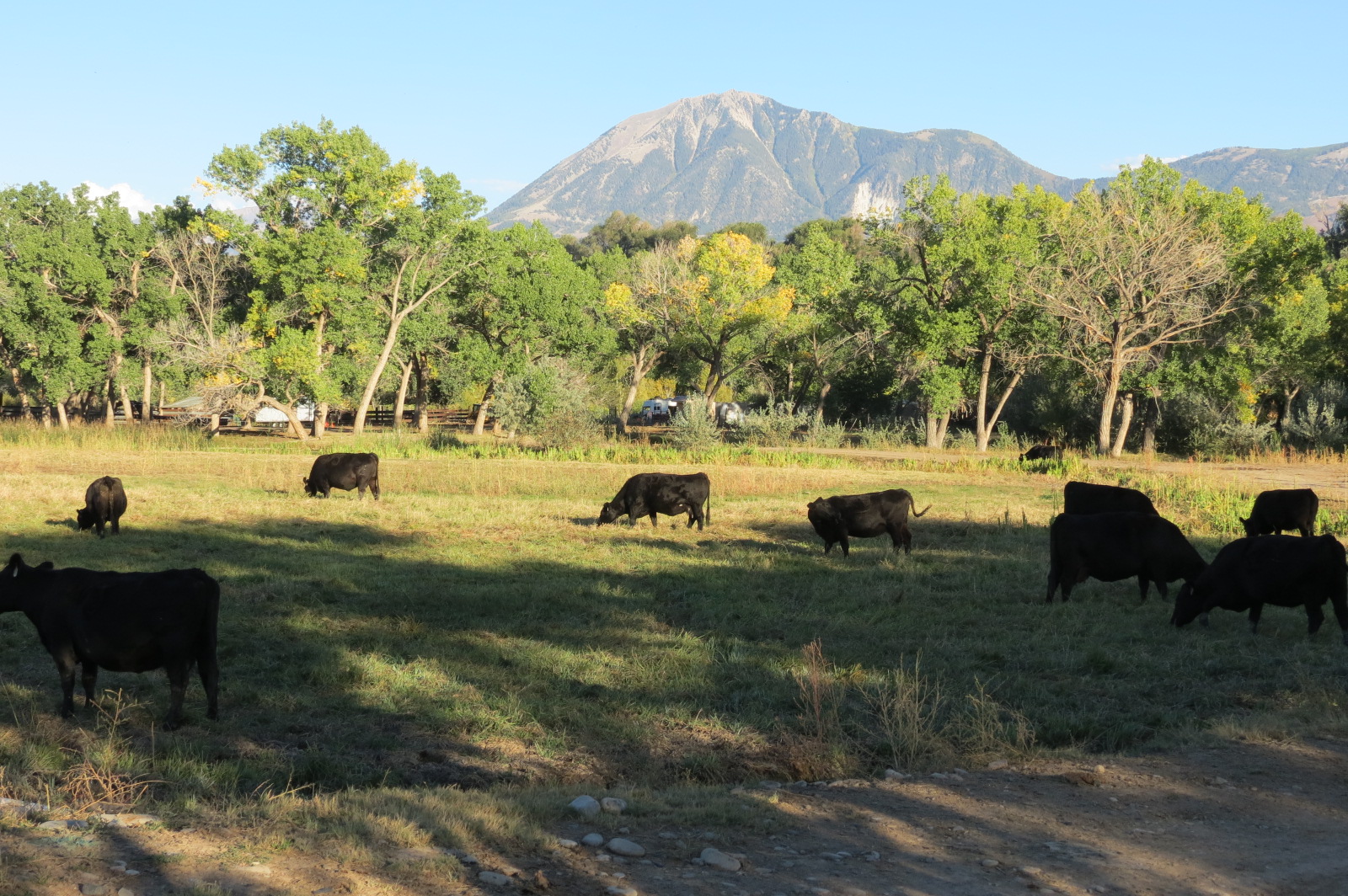
A very popular notion on the street these days is that the housing bubble is about to burst. National headlines suggest we are already in a corrective phase regarding the housing market; there is even talk of a cooling market in Denver and the Front Range. Inflation remains sticky, job growth is down, the dollar is weakening, there are layoffs in the tech world, and interest rates remain very high (at least compared to what the “under 40 crowd” are used to!). What does it all mean for your average home buyer or seller on the Western Slope of Colorado? The following is a brief Western Colorado economic history lesson ridiculously condensed, performed tongue and cheek, and likely to elicit head shaking.
The Western Slope languished in anonymity and was undiscovered for a very long time. Save for a couple fossil fuel boom/bust cycles in the 70’s and 80’s, it was pretty sleepy in our neck of the woods until around the late 90’s. Housing prices were way more in line with the national average back then, if not even lower in many backwater locations. Around this time something clicked. In 1990 the population of the Western Slope began to increase dramatically. Within 20 years Delta County increased from around 21,000 to 31,000 by 2010. Montrose County nearly doubled from 24,000 to 42,000. It was the biggest and longest population increase since the pioneers showed up at the turn of the 20th century (and kicked out all the Native Americans). I’m not really sure what caused everyone to start moving here in 1990, but it’s fun to take a stab at! In the 1990’s outdoor sports came into vogue. With the help of the X-Games, Outside magazine, and this thing called the internet, hard-core recreating became cool. Mountain biking, white water sports, skiing and snowboarding, rock climbing and mountaineering all got popular, and it seemed like it was mainly Generation X getting out there doing it, all the while searching for and settling in the next epic places to do them. Many of us were “dirt bagging,” this lifestyle which somehow became cool, in and of itself, and many of us created businesses that catered to this new outdoor lifestyle and a massive multibillion-dollar industry was born. What better place for this new industry and lifestyle to take hold than Colorado?
Then in 2008 after nearly 20 years of gradual but steady increases in property values and a dwindling supply of homes to buy, property values in Colorado (and nationwide) reached nosebleed prices and the housing market really did crash on a large scale. Loosey-goosey loan qualifications allowed everyone and their dog to over leverage and buy an extra home or two and very quickly the air was let out of the balloon. A couple big banks went under, home prices plummeted, and the Great Recession ensued. As a result, the home building industry was also decimated. Many home builders went bankrupt and never even bothered to continue and try and rebuild themselves. This was a significant event that years down the line in 2022-23 would help instigate a massive supply shock in the housing market. And now once again home values are back at nosebleed heights, and that is one of the larger contributing factors to the massive hike in inflation that the federal government is now so desperately trying to subdue. Home building is not a glamorous lifestyle, nor is it super lucrative to your average guy swinging hammers for a living. It takes a generous (loose) credit environment to allow for entrepreneurs to go out on a limb and borrow the money to develop new neighborhoods or the odd spec house. It also takes loose credit to allow you or me to finance building a new house and hire the contractors to do so. Those loose credit conditions have become tighter and tighter after banks learned their lesson from the LAST economic crisis. To top it off, building and development codes have only become increasingly more restrictive, tedious, and expensive, both nationally and at a local level. I just heard this morning on the radio (yes, I listen to the radio for information) that the state of Colorado, recognizing the need for affordable housing statewide, is trying to push mandates that would create and promote increased density in towns and urban areas (like multifamily and additional dwelling units). Reaction to these mandates were reported to be overwhelmingly negative with push back from mayors and local governments. My specific opinions on this would likely not win me any popularity awards in the community in which I reside, but who cares. I’ve always believed if a town already exists, we should allow as many people as possible to live there!
So what’s the difference between the last housing bubble and our current situation? Supply and demand. Many contend that the supply shock has been 50 years in the making. Not just here in Colorado but much of the entire U.S. AND Canada!
And now we have arrived at my point. It’s clear that people love Colorado and will pay dearly to live here. For the past 30-or-so years the Western Slope has been no exception. Since 2010 our population has only slightly increased, BUT demand is at an all-time high. Like many other desirable places in our country, there just isn’t enough housing to go around. I do not believe the current housing bubble will pop like we saw it dramatically do in 2008-2011. I think we may see some “chop” happen in the market. Volatility with bouncing interest rates will likely cause the housing market to follow suit. Thus, I do not think it will pay off substantially to either wait to sell your home or wait to buy a home, at least for the foreseeable future. Until we see an easing up of housing demand, which absent a frightening and severe “black swan” event like an alien invasion (I’m talking the mean aliens) is not going to happen. Or until we see a huge increase in the supply of new homes available for sale, which on the Western Slope of Colorado is absolutely not going to happen due to the shortage of domestic water required for larger development. And until the super tight (expensive) credit environment that we are in eases up, I predict more of the same with regards to high-value, low-supply real estate for the foreseeable future.
Here on the Western Slope, our real-estate market has a huge influence that separates us from all the national average statistics that we read in the headlines of mainstream media. There’s an elephant in the room and it’s called COLORADO! The average price of a home in our state as of April 2023 is ~$550k, nearly $175k higher than the national average price of ~$378k. That puts us in fifth place out of 50 states nationwide for most expensive residential real estate. In Delta County the median price for a home is now $355,000. Up 11% from 2022 and in the North Fork Valley median price is $428k up 2% from 2022. Colorado also ranks high in percent of salary we spend on a mortgage. Currently around 42% of Coloradan salaries are spent on house payments. (The other 30% is allegedly spent on pimped out Sprinter rigs, 27% on mountain bikes and 1% for everything else.)
As a real estate agent, I do not relish the current market conditions. Yes, prices are high, which means increased commissions in my pocket when I make a sale. BUT sales volume is WAY down and sentiment is very negative. Rarely these days do we share the excitement of helping a young family purchase their first “starter” home with enough money left in their pockets to buy a washer and dryer and maybe swap out some old windows. No longer do “entry-level” priced homes even exist in our neighborhoods! It is an unfortunate conundrum, and I feel for the young people raised on the Western Slope that are being priced out of their own hometowns.
There are no easy answers, but I do agree with Governor Jared Polis who recently revealed bill SB23-213, the “More Housing Now” proposal that mandates denser urban areas as a very good start ( https://www.cpr.org/2023/03/22/gov-polis-housing-proposal-duplexes-townhomes-adus/). Allow zoning changes to allow for multifamily housing. Allow property owners to build ADU’s (additional dwelling units). Use state grant funding to help municipalities to upgrade their infrastructure to allow for this denser population. It is the best and most feasible idea I have heard in a long time that addresses affordable housing in Colorado. I hope you will all let your local governments know that this proposal makes sense and is proactive. If you don’t agree with this proposal, I hope you will come up with your own solutions and act on them! Happy spring everyone.
Jay is a broker associate with ReMax Mountain West. He can be reached at [email protected].

